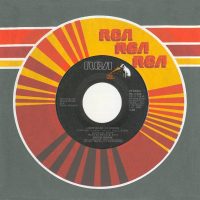 Written by: David Bowie, Brian Eno
Written by: David Bowie, Brian Eno
Recorded: September 1978, March 1979
Producers: David Bowie, Tony Visconti
Released: 25 May 1979
Available on:
Lodger
Serious Moonlight (Live ’83)
Ouvrez Le Chien (Live Dallas 95)
No Trendy Réchauffé (Live Birmingham 95)
Personnel
Contents
Carlos Alomar: guitar
George Murray: bass guitar
Sean Mayes: piano
Dennis Davis: drums
Brian Eno: synthesizer, horse trumpets, eroica horn
Tony Visconti: vocals
‘Look Back In Anger’ was a single released from David Bowie’s Lodger album in the USA and Canada.
The song was recorded with the working title ‘Fury’, an approximation of the frenetic backing track. Producer Tony Visconti later singled out Dennis Davis’s frenetic drumming and conga playing, describing it as “amazing” and “killer”.
The song shares nothing more than a title with John Osborne’s 1956 play. Instead it is a Beckettian vignette in two parts: the song’s protagonist is firstly visited by an angel with crumpled wings, before the two figures leave for an unknown fate. The song’s second half is placed in the modern era, where a person idly flicks through a magazine, awaiting the arrival of an unidentified person.
I had this thought about angels and Angels of Death, which is the character that is most revered. But this one is about a tatty Angel of Death.
Melody Maker, 19 May 1979
In the studio
‘Look Back In Anger’ was composed in the studio, with Brian Eno sharing the writing credits with David Bowie.
Eno’s contributions included assembling chord names on a blackboard, then pointing to them at intervals as instructions for the band to follow.
We did one thing on this track which was a lot of fun but terribly frustrating for the musicians. Brian and I came up with a series of cards with chords on. We stuck them on a blackboard and we had all the musicians sitting on chairs in front of the blackboard. Then Brian and I just pointed at the one to play next. It got very intense, and the more intense it got the better it got. We did that for thirty minutes and kept yelling out the style to play in. Fortunately, I’m with guys who are very receptive to what I want to do. They get angry, of course, but only if they’re not fully aware of what is going on. Often I can’t help them much because I’m not sure what’s going to come out of it either.
Melody Maker, 19 May 1979
According to Tony Visconti, the approach was not welcomed by the musicians. Interestingly, he later claimed that the results were “fruitless”, contradicting Bowie’s 1979 recollection.
Eno asked for a blackboard and wrote his eight favourite chords in big block letters. He then said to the rhythm section of Carlos, Dennis and George, ‘Okay, I’d like you to play a funky groove’, and he held a teacher’s pointer in his hand with a demeanour not unlike a professor from Oxford. ‘I will point to a chord and you will change over to that chord after four beats.’ This was not on the face of it Brian’s finest idea and I could see the rhythm section exchanging irritable looks as if to say ‘what an a*****e’. This fruitless jam took up two hours of 24-track tape. David wasn’t so sure about it but instructed me to fool around with the jam and edit the best pieces together. ‘Tony just try and construct a backing track.’ With that everyone left for the day and I eventually got something vaguely usable but not spectacular enough to work with.
Bowie, Bolan And The Brooklyn Boy
During the instrumental break, Carlos Alomar played a rhythm guitar solo.
He [Bowie] wanted me to play something in the middle, but he also wanted something like that break in ‘Young Americans’. There are times when I want to take a solo, but I don’t want it to be a lead-guitar solo – that’s always so played out. During that period we had a lot of those lead guitarists on the hill, the wind machine blowing their hair. Come on, give me a break! So, if I am going to take a solo, I’m going to take a rhythm-guitar solo. In this, John Lennon influenced me. I really appreciated what he did with rhythm guitar.
Strange Fascination, David Buckley
